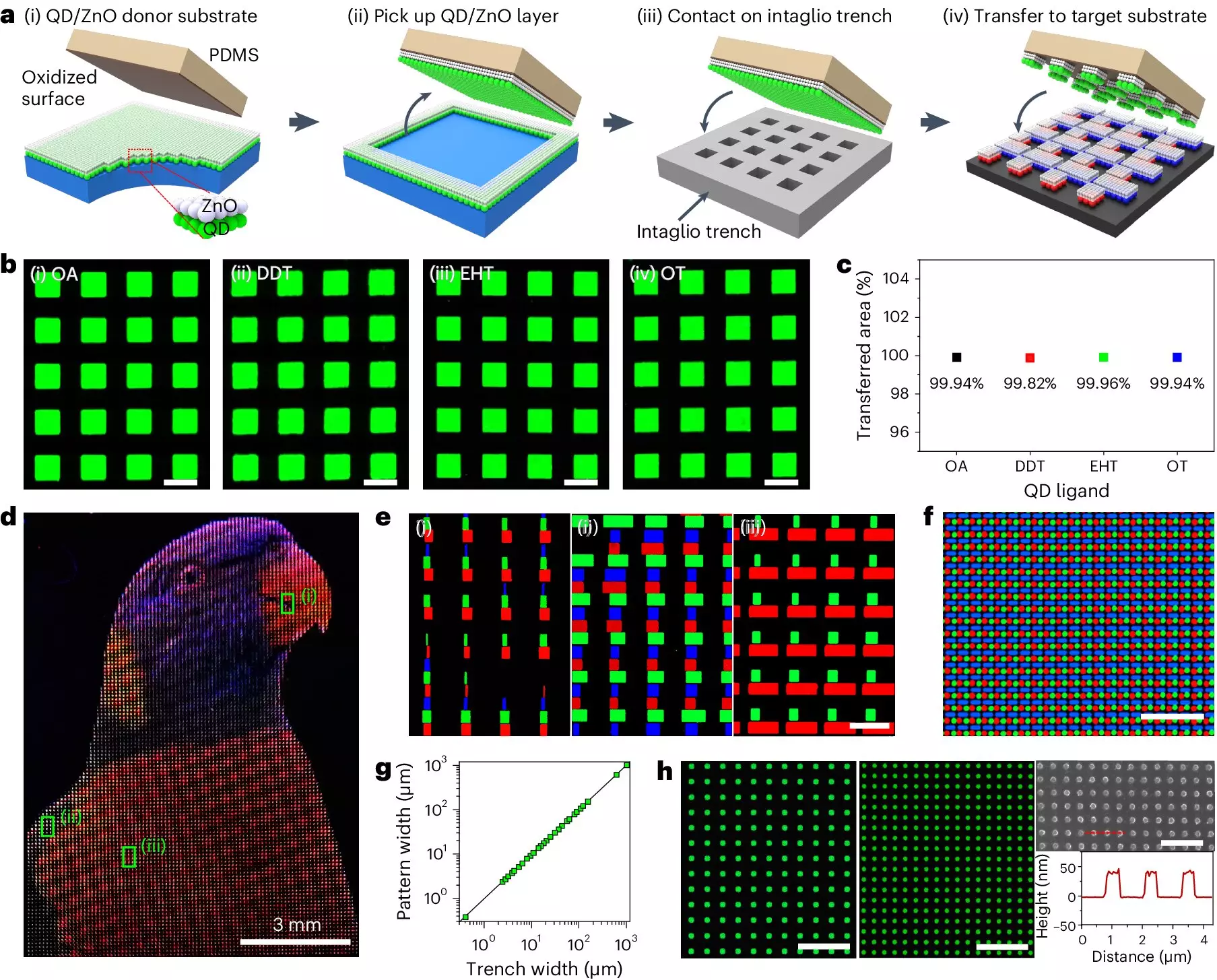The advent of wearable, mobile, and Internet of Things (IoT) technologies has sparked a growing demand for more immersive augmented reality (AR) and virtual reality (VR) experiences, as well as high-resolution wearable displays. These displays, whether worn on the wrist or eyes, require the conveyance of vast amounts of information on small screens while maintaining ultrahigh-definition patterning to prevent dizziness.
Traditional dry transfer printing methods have been limited by low luminescence efficiency, making them unsuitable for actual display production. However, a recent breakthrough in double-layer dry transfer printing technology promises to address these challenges, offering a solution for creating bright light with low current consumption.
Research and Development
Researchers at DGIST, UNIST, and the IBS Nanoparticle Research Center collaborated to develop a new dry transfer printing technology capable of producing light-emitting devices with ultra-high definition and efficiency. By reducing interfacial resistance and facilitating electron injection, the double-layer thin films demonstrate an external quantum efficiency (EQE) of up to 23.3%, aligning with the maximum theoretical efficiency of quantum dot light-emitting devices.
The innovative double-layer dry transfer printing technology enables the creation of ultrahigh-definition patterns of quantum dots, with resolutions reaching up to 25,526 pixels per inch (PPI). Through repeated printing, the researchers have validated the feasibility of mass production for commercialization, opening up new possibilities for higher resolution screens in VR and AR applications.
Professor Ji-woong Yang and Professor Moon-kee Choi express their excitement over the potential of this technology to revolutionize the AR and VR display industry. With its ability to deliver high efficiency and resolution, the double-layer dry transfer printing technology could pave the way for more immersive and engaging user experiences in the realm of wearable displays and smart devices.
The development of double-layer dry transfer printing technology represents a significant advancement in the field of display technology, offering a promising solution to the challenges faced by AR, VR, and wearable display applications. This breakthrough opens up new possibilities for enhanced user experiences and product commercialization in the rapidly evolving landscape of technology and augmented reality.


Leave a Reply